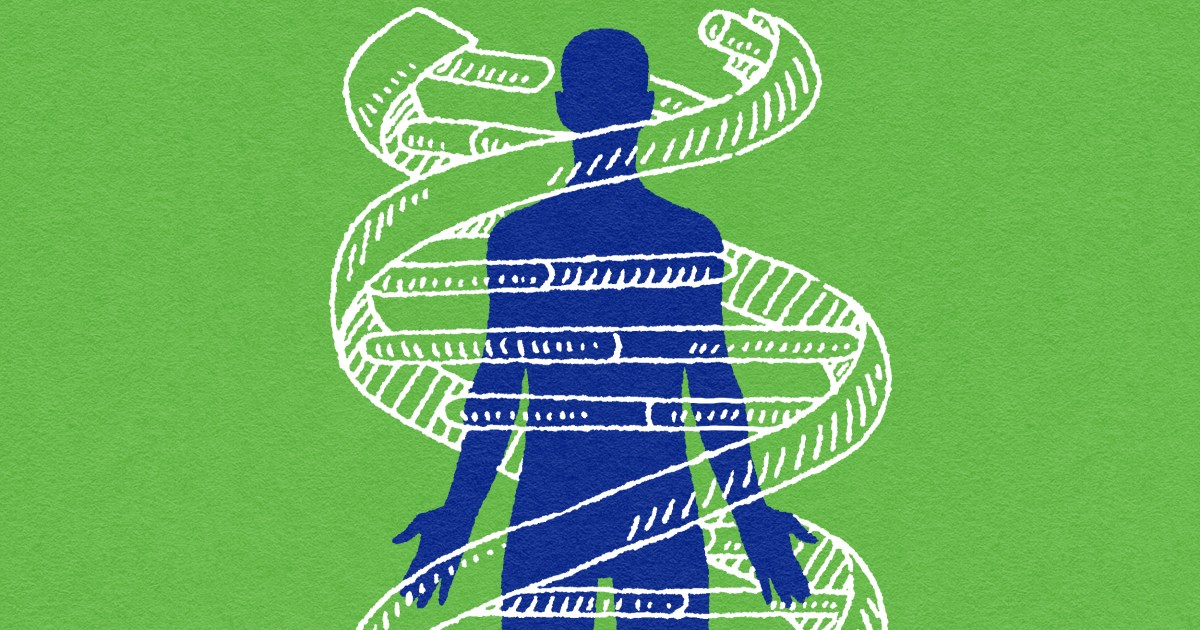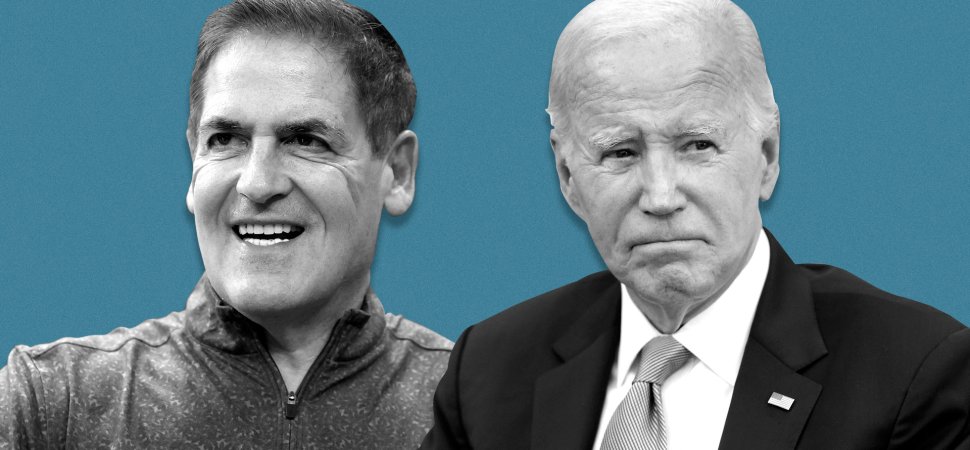| ? |
 |
|
Don't like ads? Go ad-free with TradeBriefs Premium    
CEO Picks - The best that international journalism has to offer!  S13 S13 S1 S1After a Merger, These 3 Inefficiencies Can Actually Be Assets - Harvard Business Review (No paywall)   Strategic inefficiencies play a surprising role in the success of technology acquisitions. Research involving hundreds of organizations and interviews with executives reveals that certain inefficiencies in post-merger integration (PMI) can actually propel growth. Key inefficiencies identified include: mirror teams where staff from both companies work together, increasing complexity but enhancing integration; double incentives, offering additional rewards post-merger to align goals at the cost of higher expenses; and co-location, prioritizing costly in-person meetings for better communication and relationship building. The study concludes that these short-term inefficiencies can lead to more effective long-term corporate growth, challenging the traditional focus on efficiency and redundancy reduction in corporate mergers and acquisitions.Technology acquisitions — such as Facebook’s acquisition of WhatsApp, IBM’s acquisition of Redhat, or Broadcom’s acquisition of VMWare — are increasingly common and are particularly powerful for propelling growth. They account for approximately 20% of all acquisitions, help firms control nascent markets, pursue strategic renewal, gain access to new knowledge, and advance technological capabilities.
Continued here
|
| ? |
 |
 S2 S2Neuroscience Says 1 Simple Habit Makes Your Brain Work Better (Especially If You're Sleep-Deprived) - Inc.com (No paywall)   The research, published in the journal Physiology & Behavior, was striking for its methods. Basically, study participants were put into two groups of 12 with various sleep deprivation requirements, and then asked to perform a series of seven tasks, first while at rest, and then while cycling.Joe Costello of the University of Portsmouth's School of Sport, Health & Exercise Science added: "The findings significantly add to what we know about the relationship between exercise and these stressors, and helps to reinforce the message that movement is medicine for the body and the brain."
Continued here
|
 S3 S3What Super Productive People Do Differently - Harvard Business Review (No paywall)   In 2018, I came across a meme that was going viral on the Internet. It read, “You have the same number of hours in the day as Beyoncé.” I doubt that anyone became more productive or achieved greater heights as a result of these words, but it made me wonder: Do high achievers approach their days and their work differently than most people? How do they become so efficient and productive?
Continued here
|
| ? |
 |
 S4 S4How to Turn Off Facebookâs Two-Factor Authentication Change - WIRED (No paywall)   Meta changed how two-factor authentication works for Facebook and Instagram last year. You might have received notifications about this, but it was easy to miss in the platform's sea of red alerts. OK, so what's different? "Any devices you've frequently used Facebook on in the past two years will be automatically trusted," reads Meta's updated settings page. Your smartphone and laptop may not need a 2FA code to log in, unless you go into your settings and opt out.Over time, Meta has made multiple tweaks to how it deploys 2FA. In 2018, it started to allow 2FA codes generated by third-party apps. A few years later, the company began requiring more vulnerable accounts to activate 2FA protection. The company faces a tricky balance between making it easy to log in to your account and protecting users from losing control of their online identities.
Continued here
|
| ? |
 |
|
| ? |
 |
|
|
 S5 S5When New Hires Get Paid More, Top Performers Resign First - Harvard Business Review (No paywall)   To attract top talent, employers often pay new hires more than they pay existing employees in equivalent roles. This isn’t new. But today, regulatory changes and technological advances have dramatically increased pay transparency in many sectors, making employees more aware of these pay disparities. Moreover, data from the U.S. Chamber of Commerce indicates that the workforce is expected to shrink in 2024, while a global survey of more than 30,000 employees found that salaries are expected to increase by an average of 4% in 2024, suggesting that these pay gaps will likely continue to expand.
Continued here
|
 S6 S6The Enticing Mysteries of U.F.O. Photography - The New Yorker (No paywall)   In the corner of the social-media universe that calls itself #ufotwitter, there’s always some new piece of visual evidence to discuss. Did a police body cam catch an otherworldly craft crash-landing in Vegas this week? And that kid nearby who called 911 to report an eight-foot-tall alien in his back yard—is he for real? What about this video of a saucer losing its tractor-beam grip on a cow and sending it winging over the treetops? Is this connected to the recent spate of cattle mutilations? What do you make of this blurry splotch? Does this light look weird?Of course, it’s hard to believe anything we see nowadays, and forecasts of an A.I.-fuelled disinformation apocalypse suggest that’s only going to get worse. But, in the world of U.F.O. hunters, the lack of high-quality photographic proof has always been a vexing problem. “Considering the notorious camera-mindedness of Americans,” Carl Jung wrote presciently in his 1958 book “Flying Saucers,” “it is surprising how few ‘authentic’ photographs of UFOs seem to exist, especially as many of them are said to have been observed for several hours at relatively close quarters.” Now with high-definition photographic tools held perpetually in the palms of billions of people across the globe, this problem should give us even more pause. Does this relative shortage of visuals amount to evidence that the U.F.O. phenomenon is pure bunkum, as many skeptics would have us believe? Or is it, as Jung himself famously supposed, because “UFOs are somehow not photogenic”? Or perhaps the truth is already out there, squirrelled away in some Pentagon vault or floating around the Internet, camouflaged amid the dross?
Continued here
|
 S7 S7LinkedIn Best Practices for Small Businesses and Entrepreneurs - StartUp Mindset   LinkedIn is the foremost community of professionals in the world. As a tool for recruiting, it’s unparalleled but it also serves a greater function. A robust presence on LinkedIn with meaningful content creation and engagement with other businesses can help your business to connect with like-minded professionals, potential mentors, and to identify sales leads.Whether you are a recent graduate, have spent a few years in an industry, or are closer to retirement than not, having a solid LinkedIn page is a great way to connect with your peers and to grow your social presence. LinkedIn takes elements from traditional social media networks, such as the newsfeed, connection requests based on mutual acceptances, and a customizable profile, and imbues them with a strong networking platform and job posting board.
Continued here
|
 S8 S8Americaâs Last Morse-Code Station - The Atlantic (No paywall)   “Calling all. This is our last cry before our eternal silence.” With that, in January 1997, the French coast guard transmitted its final message in Morse code. Ships in distress had radioed out dits and dahs from the era of the Titanic to the era of Titanic. In near-instant time, the beeps could be deciphered by Morse-code stations thousands of miles away. First used to send messages over land in 1844, Morse code outlived the telegraph age by becoming the lingua franca of the sea. But by the late 20th century, satellite radio was turning it into a dying language. In February 1999, it officially ceased being the standard for maritime communication.Nestled within the Point Reyes National Seashore, north of San Francisco, KPH Maritime Radio is the last operational Morse-code radio station in North America. The station—which consists of two buildings some 25 miles apart—once watched over the waters of the Pacific and Indian Oceans. Both KPH sites shut down in 1997, but a few years later, a couple of radio enthusiasts brought them back to life. The crew has gotten slightly larger over the years. Its members call themselves the “radio squirrels.” Every Saturday, they beep out maritime news and weather reports, and receive any stray messages. Much of their communication is with the SS Jeremiah O’Brien, a World War II–era ship permanently parked at a San Francisco pier.
Continued here
|
 S9 S9New X-Ray Map of Cosmic Megastructures Unravels Subatomic Mysteries - Scientific American (No paywall)   A false-color X-ray view of one half of the sky, based on data from the eROSITA telescope. Sources of broad-band x-ray emission (white) include halos of hot gas surrounding galaxies as well as feeding black holes. Longer wavelength x-rays correspond to redder colors. Shorter wavelength x-rays are shown in bluer hues, and cluster around the dark, dusty regions of the Milky Way where longer wavelengths are blocked.Ghosts haunt our galaxy, passing right through not only walls but entire planets and even heftier objects with ease. Trillions upon trillions are whispering their way through your body even now, as you read this. These subatomic specters, called neutrinos, are harbingers of fiery cosmic processes, such as the nuclear fusion powering our sun and the titanic supernova explosions that herald the deaths of more massive stars.
Continued here
|
 S10 S10Are passive funds to blame for market mania? - The Economist (No paywall)   The year is 2034. America’s “magnificent seven” firms make up almost the entirety of the country’s stockmarket. For Jensen Huang, the boss of Nvidia, another knockout quarterly profit means another dizzy proclamation of a “tipping point” in artificial intelligence. Nobody is listening. The long march of passive investing has put the last stockpickers and stock-watchers out of a job. Index mutual and exchange-traded funds (ETFs)—which buy a bunch of stocks rather than guessing which ones will perform best—dominate markets completely. Capitalism’s big questions are hashed out in private between a few tech bosses and asset managers.
Continued here
|
 S11 S11Scientists can help fetuses by growing tiny replicas of their organs - The Economist (No paywall)   WHEN A FETUS shows signs of trouble in the womb, doctors face a precarious task. They must find out what is wrong and how to help without jeopardising the pregnancy. Despite sophisticated modern genetic and imaging tests, many questions are difficult to answer—how severe a malformation is, for example, or how a fetus might respond to treatment. But now scientists have developed a way to create simplified versions of a fetus’s own organs, outside the womb, giving doctors the ability to prod and probe without putting anyone at risk. “For the first time, we can actually access the fetus without touching the fetus,” says Mattia Gerli, a stem-cell biologist at University College London (UCL).
Continued here
|
 S12 S12Europeâs new-look winter: floods, high sea levels and melting glaciers - The Economist (No paywall)   MARK HARBERS has arguably the most important job in the Netherlands. As minister of infrastructure, he is responsible for making sure the enormous dykes and floodgates meant to protect the country against rising sea levels get built. This winter has made it clear how crucial that job will be. In early January there were high-water alerts all over the country. At Marken, an old fishing village north of Amsterdam, waves lapped just a couple of metres from the top of the dyke—well above the floors of the houses behind it. The Markermeer, part of a bay that splits the northern Netherlands down its middle, reached its highest level ever, 45cm above the national benchmark known as Normal Amsterdam Level.
Continued here
|
 S14 S14The "Big Bang" turns 75, thanks to its greatest opponent   One of the greatest, most profound questions ever asked by humanity is simply, “Where did all this come from?” For thousands of years, you were likely only to get a speculative myth as your answer, as this was regarded as a question for philosophers, theologians, or poets: a question far beyond the reach of any sort of scientific endeavor. All of this changed in the 20th century, when advances in theory, observation, measurement, and instrument technology led us to a definitive answer for the first time: a hot, dense, largely uniform, and rapidly expanding state known as the Big Bang.While the idea grew out of seeds that were planted in the 1920s and further developed throughout the 1940s, the name itself — Big Bang — was coined neither by someone who worked on developing that theory nor by someone who discovered a key piece of evidence supporting it, but instead by perhaps its greatest scientific detractor: British scientist Fred Hoyle. Hoyle, a frequent guest on BBC radio throughout his life, simply refused to believe that the idea of the Universe having an origin at a single moment in time was anything other than a preposterous creation myth itself. But in science, unlike any other discipline, it is not:
Continued here
|
 S15 S15The most beautiful questions any leader can ask   It’s common for aspiring leaders to be focused on what they hope to get from being a leader (status, glory, money) without considering whether there is a greater purpose driving their leadership aspirations—or clarifying what that purpose might be. The demands of leadership now are so great that unless one is fueled by a sense of purpose that transcends personal ambition—and unless one enjoys the actual day-to-day work of engaging with and leading others—the pursuit may prove unsatisfying or unsustainable in the long run. Susan Cain, author of the books Quiet and Bittersweet, observed in a New York Times essay that universities, and the students entering them, have become hyper-focused on leadership. (The schools want to be seen as institutions that produce leaders, while the students all want to become leaders.) But as Cain points out, both sides seem to be defining leadership in shallow terms—based on how many achievements a student can list or the number of clubs that student has become president of. This creates the sense that the overall objective is “to be a leader for the sake of being in charge, rather than in the name of a cause or idea [the student cares] about deeply.”
Continued here
|
 S16 S16Why genes shape but don't determine our behavior   Genes are quite remarkable things. But in the last few decades, the power that we have ascribed to them has gotten a little out of hand. This has led to the rise of biological (or genetic) determinism. This is the idea that our biological makeup (as opposed to culture, environment, or personal decisions) is the dominant determinant of our behavior. There is now a “warrior gene” legal strategy for criminal defenders advocating on behalf of persons accused of violent crimes.(One cartoon depicts an attorney rendering his client’s plea before the bench: “Not guilty by reason of genetic determinism, Your Honor.”) There is at least one company that will test your genome for a supposed “infidelity gene.” You can submit a saliva sample and find out if you (or a potential mate) have the variant of the gene and are therefore likely to cheat in a romantic relationship. All this for the low price of $149! This same company can help you discover whether thrill-seeking and risk-taking (the “wanderlust gene”) are in your DNA.
Continued here
|
 S17 S17Unveiling Big Think+ Curations: Launch custom learning experiences in minutes   At Big Think+, we understand that every learning and development team is unique, with diverse needs and aspirations. Whether you’re a one-person learning team or navigating the complexities of a large L&D department, one consistent desire echoes through our conversations with customers: the need for adaptability. While structured courses play a critical role in most programs, modern learners and learning managers want the ability to customize experiences and blaze their own learning paths. That’s why we decided to build a feature that would empower users to do just that.Curations, a dynamic new feature available to Big Think+ platform users, enables learning managers and learners to save and group Lessons, Classes, Learning Paths, and Courses for self-paced learning. And with just a few clicks, learning managers can publish Curations to their learners’ home pages for easy access.
Continued here
|
 S18 S18Office Rental Firm IWG Just Posted Record Revenue. The State of Co-Working in 2024, Explained   IWG, the global flexible-workspace network based in Switzerland, announced the highest revenue in its history today and an annual core profit boost of 34 percent in 2023, citing a growing demand for hybrid work solutions. Of its over 4,000 workspace locations, roughly a third are based in the U.S., according to the firm's website.  IWG is not the only company seeing a surge. As Inc. previously reported, revenue for Industrious -- the New York City-based co-working company -- grew nearly 40 percent in 2023. Others are considering the opportunity: JLL, the real estate services company, found that 41 percent of its tenants expect to increase flexible space. Â
Continued here
|
 S19 S19Unlock Marketing Success With Choice Thinking   Those of us utilizing imaginative thinking to benefit businesses must be acutely aware of how our creative efforts align with business objectives, cater to the target audience, and harmonize with the context of our overall marketing plan. All while respecting the unique qualities of individuals and communities. Cleese's insight is spot-on. Operating with a focus on strategic creativity yields marketing that people will notice. While creative solutions may be interesting, strategically creative solutions go a step further by being appealing and relevant to their intended audiences.
Continued here
|
 S20 S20Why Employers Are Pulling Back on Weight-Loss Drug Coverage   According to a Tuesday report from the Wall Street Journal, companies are either eliminating coverage entirely or restricting how employees can access weight-loss medications. RWJBarnabas Health, a New Jersey-based health care provider, reportedly stopped covering weight loss medications last month. A spokeswoman for the company pointed to both the cost of the drugs and the company's observations that employees were not always effectively using the medications. The company reportedly continues to cover drugs like Wegovy for employees with diabetes.The move comes as many pharmaceutical companies have raised the prices of drugs such as Ozempic and Mounjaro. For example, the price for Ozempic rose 3.5 percent this year, making the monthly per person cost now close $970. While it's typical for the cost of prescription drugs to rise every year in accordance with inflation, employers are likely to feel the impact of even moderate price increases for weight-loss medications due to their already high costs, Nelly Rose, a pharmacist at NFP, a leading benefits consultant, previously told Inc.
Continued here
|
 S21 S21How the Founders of a $10 Million Marketing Agency Celebrate the Black Community Every Day of the Year   Eight months ago, KFC introduced its latest star-studded advertisement, this time featuring University of Colorado Boulder's head football coach, Deion Sanders. The playful and lively ad -- which shows Sanders and his five children arriving at the drive-thru lane of the fast food giant packed into a golf cart, his kids reminding their father not to forget parts of their orders -- enamored viewers and YouTube commenters alike.The commercial's success -- along with previous ads featuring rapper Jack Harlow and comedian Druski -- is the work of Louisville, Kentucky-based marketing agency Nimbus. Founded in 2002 by the husband and wife duo Stacey and Dawn Wade, Nimbus has partnered with brands like Jack Daniel's, MassMutual, and of course KFC, to help bring their campaigns to life. The company now has an annual revenue upwards of $10 million.
Continued here
|
 S22 S22Mark Cuban Endorses Joe Biden for President   Mark Cuban has sought to lower prescription drug prices through his alternative generic drug business, Mark Cuban Cost Plus Drugs. The billionaire entrepreneur thinks President Joe Biden is best equipped to execute on that vision and endorsed the incumbent for re-election at a White House event on prescription drugs on Monday. Cuban used the opportunity to lambast what he sees as some of the biggest perpetrators of pharmaceutical price-gouging: pharmacy benefit managers. These are industry intermediaries -- in some cases owned by big health care insurers -- that negotiate drug prices and rebates among manufacturers, pharmacies, and insurers. Cuban implored the Biden administration to "stop doing business with them," according to Bloomberg. Such a move would prompt industry change within "10 seconds," he said. Cuban did not respond to an Inc.com request for comment.Â
Continued here
|
 |
TradeBriefs Publications are read by over 10,00,000 Industry Executives About Us | Advertise Privacy Policy Unsubscribe (one-click) You are receiving this mail because of your subscription with TradeBriefs.
Our mailing address is GF 25/39, West Patel Nagar, New Delhi 110008, India |


































































